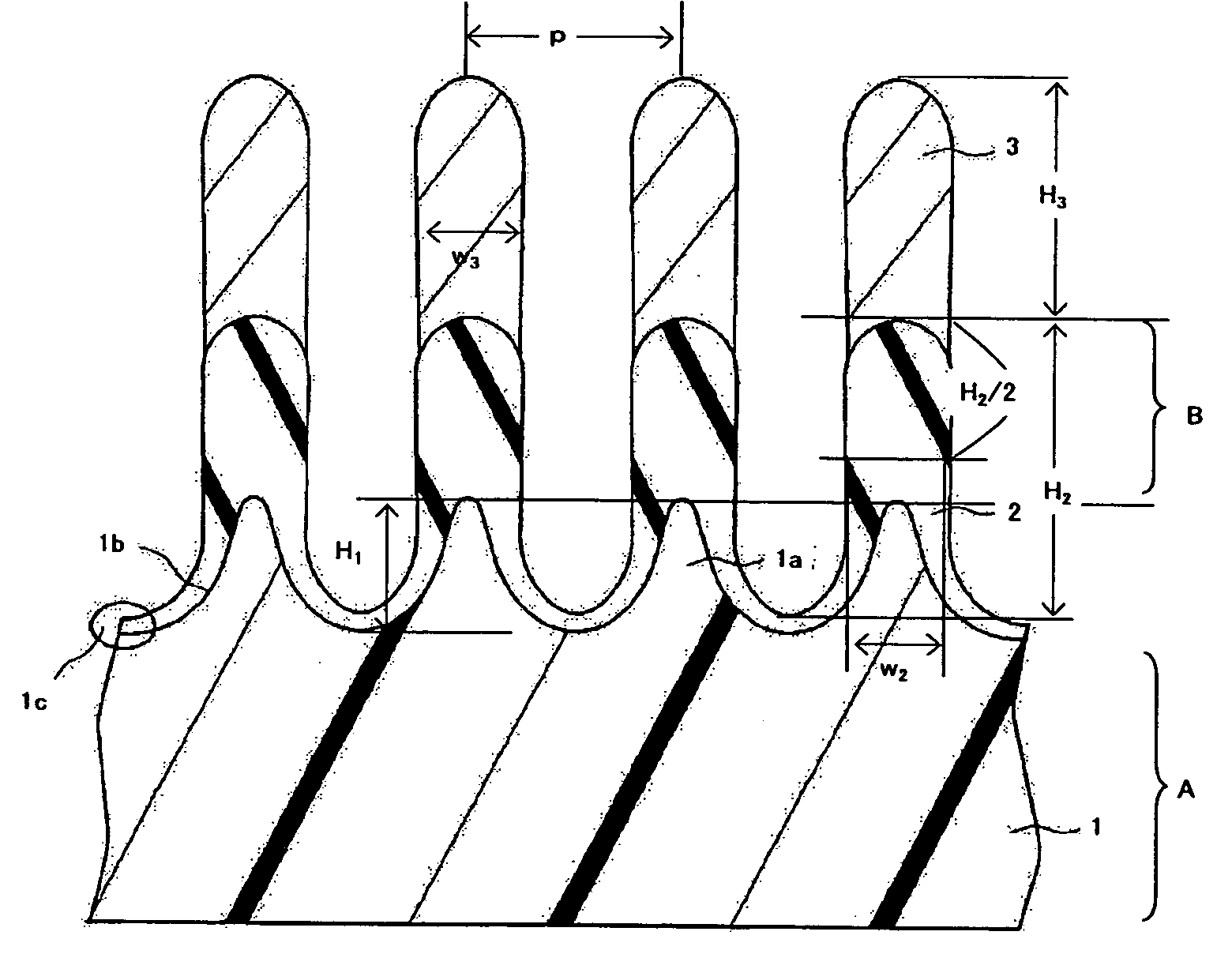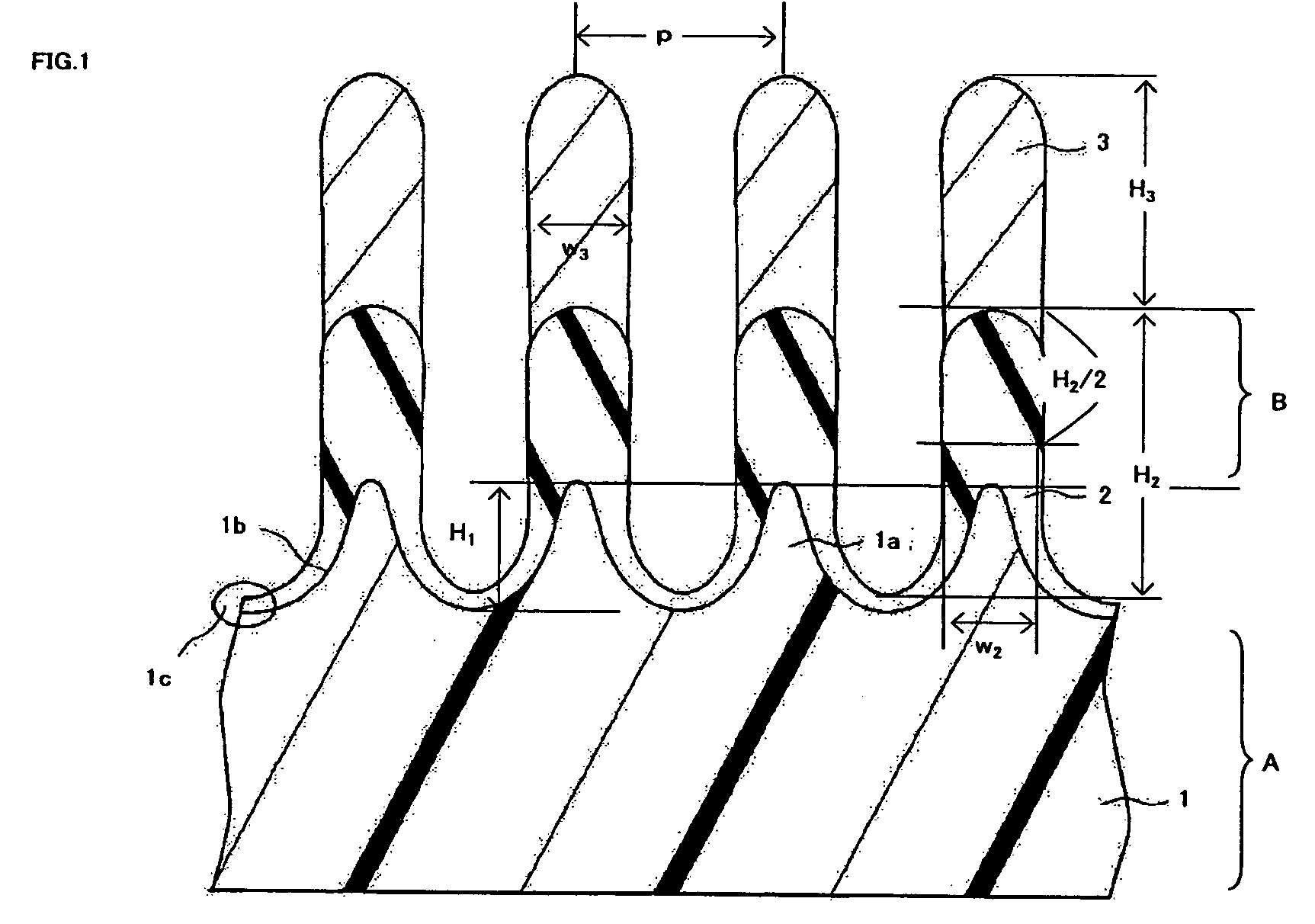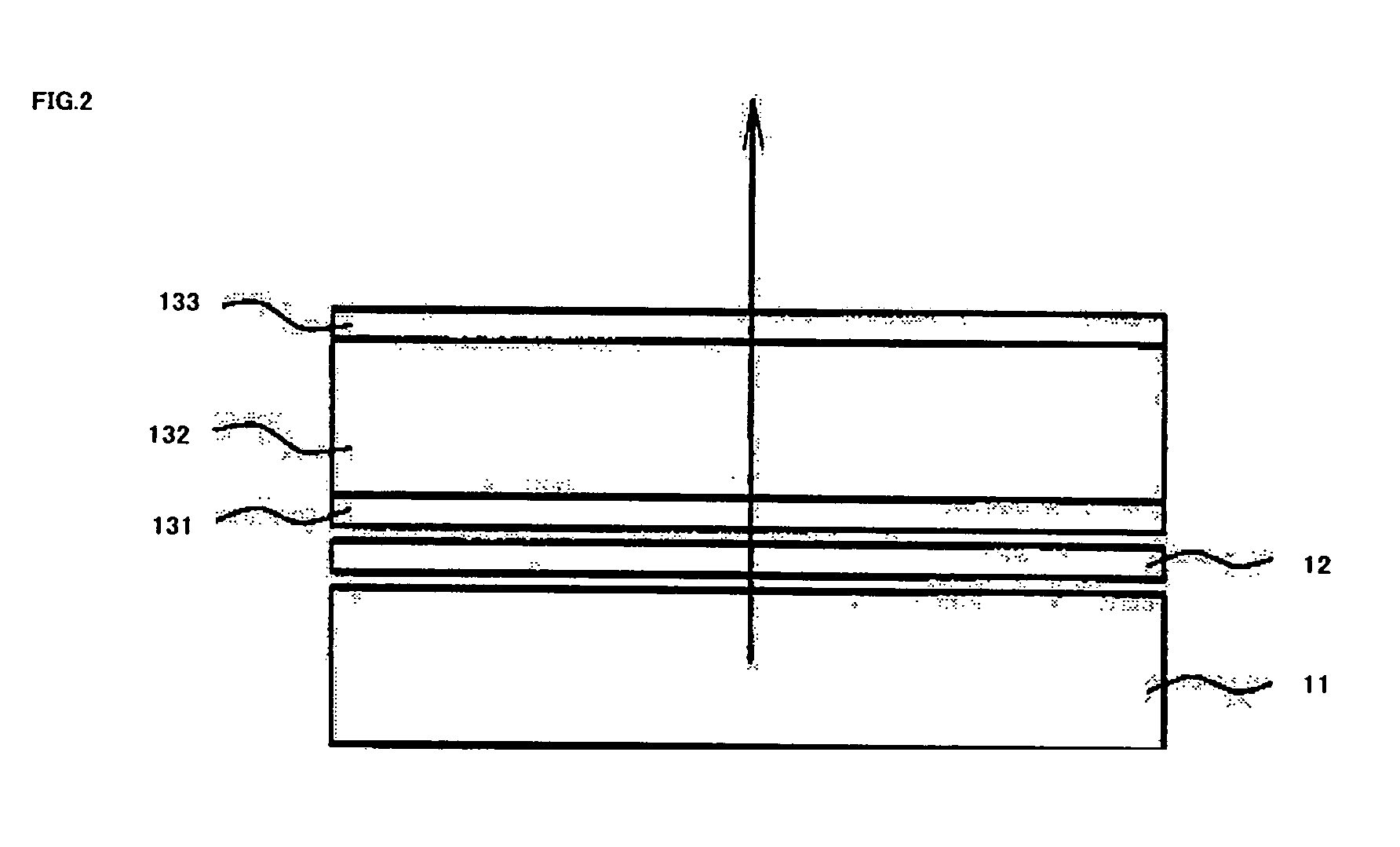Wire grid polarizer and liquid crystal display device using the polarizer
a technology of liquid crystal display device and wire grid, which is applied in the direction of optics, instruments, optical elements, etc., can solve the problems of insufficient degree of polarization in a short-wavelength region of visible light, 120 nm or less, and the difficulty of microstructural concave-convex grid implementation, etc., to achieve the effect of easy removal
- Summary
- Abstract
- Description
- Claims
- Application Information
AI Technical Summary
Benefits of technology
Problems solved by technology
Method used
Image
Examples
Embodiment Construction
[0029]FIG. 1 is a schematic cross-sectional view showing part of a wire grid polarizer according to an embodiment of the invention. The wire grid polarizer as shown in FIG. 1 is mainly comprised of a resin substrate 1 having grid-shaped convex portions, a dielectric layer 2 provided to cover the grid-shaped convex portions 1a (hereinafter, simply referred to as convex portions 1a as appropriate) of the resin substrate and part of side faces 1b of the convex portions 1a, and metal wires 3 provided on the dielectric layer.
[0030]A resin for use in the resin substrate 1 is required to be a resin substantially transparent in the visible region. Examples of such a resin include amorphous thermoplastic resins such as a poly methyl methacrylate resin, poly carbonate resin, polystyrene resin, cycloolefin resin (COP), cross-linked polyethylene resin, polyvinyl chloride resin, polyallylate resin, polyphenylene ether resin, modified polyphenylene ether, polyether imide resin, polyether sulfone ...
PUM
| Property | Measurement | Unit |
|---|---|---|
| wavelengths | aaaaa | aaaaa |
| area | aaaaa | aaaaa |
| wavelengths | aaaaa | aaaaa |
Abstract
Description
Claims
Application Information
 Login to View More
Login to View More - R&D
- Intellectual Property
- Life Sciences
- Materials
- Tech Scout
- Unparalleled Data Quality
- Higher Quality Content
- 60% Fewer Hallucinations
Browse by: Latest US Patents, China's latest patents, Technical Efficacy Thesaurus, Application Domain, Technology Topic, Popular Technical Reports.
© 2025 PatSnap. All rights reserved.Legal|Privacy policy|Modern Slavery Act Transparency Statement|Sitemap|About US| Contact US: help@patsnap.com



